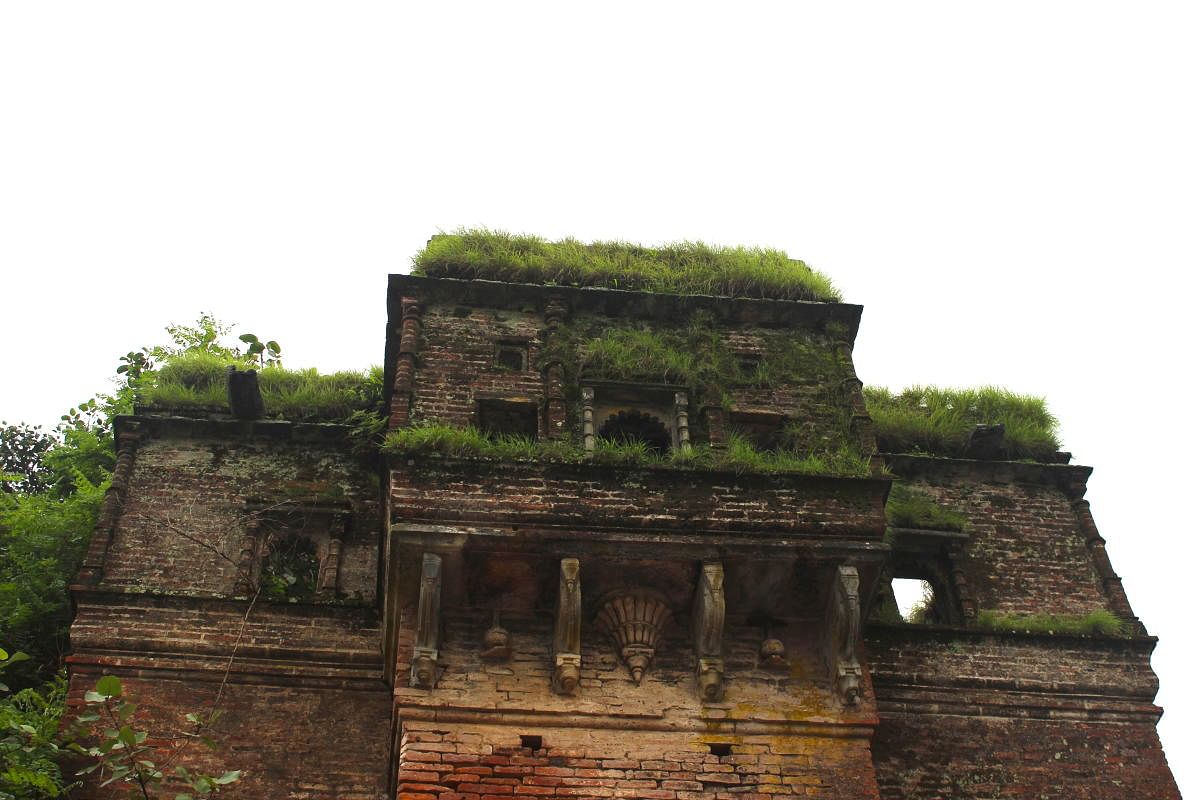
The village of Achalgarh lies 8 km from Mount Abu hill-station, further on the road leading to the famous Dilwara Temples, and is nestled amidst the Aravalli ranges in South Rajasthan. Achalgarh complex, holding historical and religious significance and situated in a declared eco-sensitive zone, comprises Achalgarh Fort, Mandakini Kund — a water reservoir which remains dry during the summer months, the important shrine of Shiva — Achaleshwar Mahadev Temple, built in 813 AD, a second reservoir, and a handful of other Hindu and Jain temples which are located inside and adjacent to the fort.
Overflowing with legends
Achalgarh Fort, built during the rule of the Parmar Dynasty was expanded and rebuilt by Rana Kumba of Mewar in the 14th century . According to legends, Mandakini Kund, overlooked by a salute of three buffaloes, overflowed with ghee while sages performed yagnas in ancient times. Demons in the form of three buffaloes were infamous for their clarified butter-related thievery during the night. Dharavarsha, with a single arrow, managed to kill the buffaloes and the pierced statues still stand on the side of the kund.
Today, the fort complex and encompassing water bodies are eyesores and make for a sorry sight. Much of the complex is under the patronage of the Sirohi royal family and receives no assistance from the Archaeological Survey of India (ASI) since it is not a listed and declared protected site. While the fort complex has been in a state of neglect for decades, its rapid deterioration has been expedited by poor management, law enforcement, a lack of waste disposal facilities, and any desire to preserve the exquisite fortified structures which still stand today.
In a mess
The head of the Sirohi royal family and a historian, HH Maharao Ragubir Singh Bahadur, has, according to online sources, devoted his life to reveal that, “India was on the fore of all scientific, social and philosophical fields” in times bygone. In 2018, he was awarded the Padma Shri, the fourth-highest civil award in India, for his contribution in the field of history. For this reason, the current state and neglect of the Achalgarh site are all the more puzzling. The municipality and the local panchayat remain silent on the issue, while residents and shopkeepers fail to understand the importance of preserving a historic jewel.
A decade ago, the steps leading to the Mandakini Kund were hastily removed as part of planned restoration work. The ancient rock steps still lie in a pile of rubble to this date. While there has been no attempt to “restore” this ancient site, what such thoughtlessness has ensured is that the holy kund deteriorates further and the stone steps disappear one by one as a result of theft. One is forced to ask why such schemes are undertaken carelessly and in the absence of competent supervision?
Today, the Achalgarh site lies in ruin. Disorganised shops and a parking lot crowd the area leading up to the fort. Garbage can be found at every corner of the site. Waste disposal facilities are non-existent. Prime Minister Narendra Modi’s Swachh Bharat Abhiyan appears to have made no inroads in this part of the country. Mandakini Kund and Revti Kund, situated inside the fort, are heavily polluted due to waste dumping. Shortly after the monsoon, the reservoirs are inundated by toxic blue-green algae and water hyacinth. Waste produced by local shops is conveniently emptied into the reservoirs or simply scattered around the site.
The site being classed as a tourist attraction is astonishing. Perhaps, it is time to scrap Achalgarh as an attraction on the destination checklist for tourists visiting Mount Abu altogether. In a country with an abysmal record of historical and heritage preservation, and like numerous other historical sites, the dilapidated Achalgarh site is ripe for being relegated to history.
It remains to be seen whether a privatised conservation model or adoption of the site by the ASI would do justice to this historical site. Alternatively, a possible way forward would involve the current management to willingly accommodate day-to-day operations of the site being handled by a local environmental group and concerned residents.